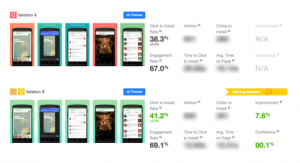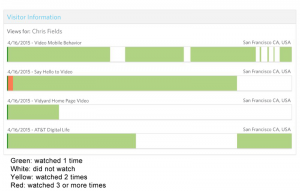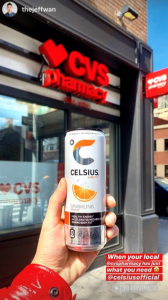Cloud-based legal tech platform Clio’s content marketing strategy using DAM technology as the foundation for rapid growth.
Clio, a cloud-based and client-centered legal technology platform, made history by becoming the first global legal practice management unicorn. In 2021, Clio landed a US$ 110M Series E investment led by funds and accounts advised by T. Rowe Price Associates, Inc. and OMERS Growth Equity.
Its tremendous success has been largely due to the company’s ability to scale marketing assets and messaging quickly during a time when an increasing number of legal professionals and practices were turning to digital solutions to help them run their business. Clio used Bynder, an enterprise-grade digital asset management platform to reimagine their entire process for producing and sharing content.
Clio’s Creative Director, Danielle Giroux, spearheaded the selection and implementation of the DAM. Giroux oversees Clio’s brand assets, messaging, and consistency across multiple teams and departments. “I focus the brand identity across the organization,” explained Giroux. “Everything from employee hiring, through sales, customer success, and our external Clio Cloud Conference.”
Clio’s Cloud Conference is an annual conference for legal professionals that focuses on technology, client experience, and legal trends. Last year the event went fully virtual for the first time, but still drew over 4500 attendees and boasted a keynote presentation by author and entrepreneur Seth Godin.
Said Giroux, “The Clio cloud conference is like a separate brand within Clio. It’s one of the largest global legal technology conferences with representation from over 70 countries.”
Folder hierarchy craziness
About a year ago, Giroux recognized that Clio needed a more streamlined and efficient approach to managing digital assets across the organization.
“Before the DAM, our assets were stored in nested folders,” said Giroux. “It was folder hierarchy craziness that didn’t give any visibility into the brand. That was an important issue that I hit on often when explaining the benefit of the DAM.”
One of the biggest problems with storing assets in nested folders is that it was difficult for Clio’s employees and vendors to maintain brand consistency or find what they needed. Search functionality was limited to the file name, which meant that when an asset was uploaded, it could be easily lost.
Duplicate assets were also an issue, with the same file being uploaded many times over without any way to track it. Duplicate instances of an asset meant they were difficult to delete, since the same file lived across many different nested folders.
The catalyst for finding a better solution came when some important assets were lost. Said Giroux, “Before we implemented Bynder, our files were accessed via Google Drive. We ultimately lost some assets due to a change in permission settings and this experience helped me build a case for why we needed something that was secure for our assets and would also help us as we scaled the business.”
Download Enterprise Digital Asset Management Platforms: A Marketer’s Guide
Scaling with a DAM platform
Clio needed a digital asset management solution that was flexible enough to scale and grow with them. Giroux was drawn to Bynder because she recognized she could turn different modules on and off based what was needed and when.
“In my initial conversations with the sales team at Bynder, I learned that we could grow into using the different modules and templates. We didn’t have to understand and adopt everything right up front, but we knew that foundationally it would help us organize all of our assets and we could scale new functionality on top of that using a phased approach,” said Giroux.
Lack of visibility into how the brand came together across channels was inhibiting Clio from making an informed decision on how to scale the brand. Giroux made the case for Bynder based on the need to build and maintain brand recognition for Clio as the company grew.
Ultimately, multiple departments and team leaders were part of the decision-making process to purchase the DAM including Clio’s VP of Marketing, Director of Strategic Engagement, Director of Content and Communications, and Director of Inbound Marketing and Operations. The IT and security teams were also involved in the selection and setup process of Bynder since Clio needed to be very buttoned up from a data security and compliance perspective.
The evolution of the brand meets DAM
Once the DAM was implemented, Clio structured their brand evolution into multiple phases so that teams throughout the organization could provide input into how their functions within Clio could leverage the brand.
Their first goal was to get a deep understanding of their customers and prospects, including the insights they provided that shaped Clio’s brand architecture and direction.
Giroux’s team communicated a three-phased approach with the following embedded tiers.
- Phase 1: Foundations laid the groundwork via templates and guidelines to inform all other phases;
- Phase 2: Asset Overhaul applied the guidelines to all existing assets including adding new versions to each asset on the DAM. This phase included creating templates to enable the organization to create assets that aligned with the new direction; and
- Phase 3: Brand Extensions focused on all sub-brands for Clio, both internal and external facing.
Giroux explained that it took about a year to restructure the entire branding and asset management process. Now that Bynder is an integral tool within the creative process at Clio, they’re beginning to integrate it with other tools in their tech stack.
“Bynder is very easy to use, but it took us the better part of a year to get all of our assets sorted and build up the templates that we needed while going through brand evolution,” explained Giroux. “This was happening while the brand was evolving. When you’re in a company that’s in hyper growth, there are a lot of things that are in flux.”
The backbone of how Clio produces content
Implementing a DAM was a game changer for Clio. It gave them a birds-eye view of the brand, something that high-growth organizations deeply value.
Giroux’s team can see what assets are accessed and uploaded on a day-to-day basis and can guarantee the assets people are using are the approved, final content.
From every level within the company, team members know that the DAM is the central source for brand assets. Bynder eliminated the need for knowing where legacy assets, past campaigns, and previous requests are stored which has enabled Clio to create a brand foundation that is built for scale. Since Bynder was launched in August 2020, Giroux’s team has tracked:
- Over 8,000 uploads
- Over 7,000 logins
- Over 500 users
- Over 11,000 keyword searches
- Over 38,000 brand guidelines views
Giroux sees those 11,000 keyword searches for assets as 11,000 Slack messages that didn’t happen. The DAM allowed people to find the assets they needed independently, enabling the creative team to stay focused on their design work.
When asked if she had any advice or parting thoughts for creative leaders embarking on a similar journey to better manage assets, Giroux advised getting the DAM into as many people’s hands as possible—and sooner rather than later.
“I think that if we had understood how powerful the DAM was going to be for our business, more people would have wanted to be involved up front,” she explained. “Most people thought this was something we were doing for the creative team, but I could see the business impact that Bynder was going to have. Now the DAM is the backbone of how we produce and share content across the organization.”
Watch MarTech Live: Making DAM Work
The post How legal tech unicorn Clio leveraged DAM to fuel rapid growth appeared first on MarTech.
MarTech(49)
Report Post







